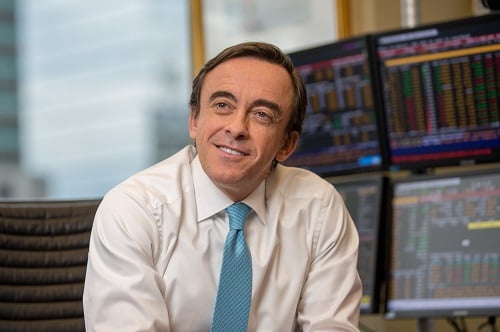AGF’s Chief Investment Officer Kevin McCreadie tells WP about the markets he favours most right now

Ingrained biases to home markets can be detrimental to investors in any region, but for Canadian investors those attitudes can be severely damaging to portfolio performance. As a result, stepping outside of the perceived comfort zone of Canada to take advantage of the opportunities in international and emerging markets is a must for any investor too heavily invested in Canada’s lagging market.
The Chief Investment Officer of AGF, Kevin McCreadie, has a simple sports analogy to explain why Canadian investors need to ditch their home biases: There are two basketball coaches, McCreadie explains, both of whom have to pick 10 students for their team. Coach A is selecting his team from a school of 200, while Coach B is picking from a group of 2,000. It doesn’t take a mathematical genius to work out who is going to have the best shot at finding 10 good basketball players.
“Canada is 20% energy, roughly the same in materials, and around 38% financials – a grouping which consists of banks that lend to those first two sectors,” says McCreadie. “In the TSX, we don’t have a deep representation of staples, healthcare names or technology to fish from. So for us, it makes a lot of sense for our investors to exploit global opportunities. Being able to choose broadly, and moving away from a narrower more sector-focused concentration, will benefit Canadian investors.”
Canadian investors are shown to be more cautious than other investors from across the globe. Although being risk averse isn’t necessarily negative, if it manifests itself in home bias – especially in years like 2017 – it could cause damage to a portfolio that is difficult to fix.
“Canada had one of the better performing developed markets last year when oil finally moved off the bottom,” says McCreadie. “This year it is barely positive relative to the U.S. market, which is up almost double digits. If you get those very cyclical energy and materials trades correct, Canada does well but during times when those are under pressure investors tend to do poorly.”
The U.S. is an obvious market for Canadian investors to enter, and now could be a good time. McCreadie’s view of the U.S. is improving as it appears as though President Trump might finally be able to push through new tax reforms.
“Also, the economy in the near-term may benefit from some of the unfortunate hurricane incidents that we’ve seen,” McCreadie says. “A large number of homes and structures will have to be rebuilt and we are starting to see that in the data. In the short-term, we are more optimistic than we have been in the U.S.”
Outside of the U.S., AGF’s biggest overweight is Japan. As Prime Minister Abe’s reforms continues to take hold, valuations and earnings look attractive. With an election on the horizon, McCreadie is keeping a close eye on how the Japanese electorate casts its vote.
“Electoral risk has been something on the burner in every market this year,” McCreadie says. “In the case of Japan, we are pretty comfortable that Abe maintains power, but the question is does he hold onto the majority he currently has. However, we don’t expect the election to derail any of the reform efforts that we see.”
Related stories:
Inside AGF’s strategy for growth



